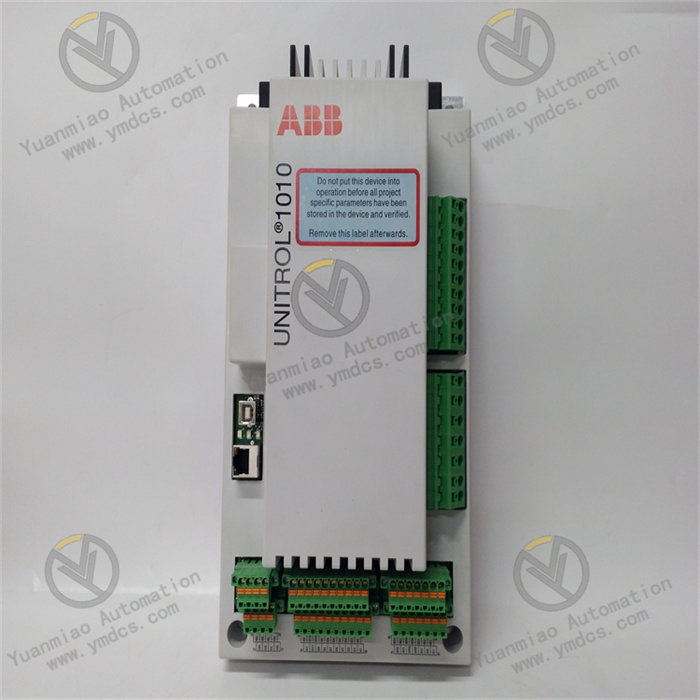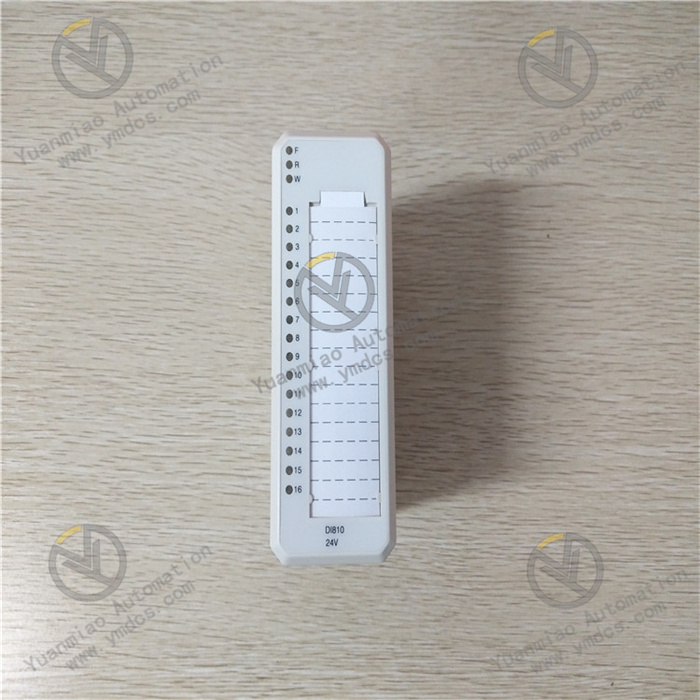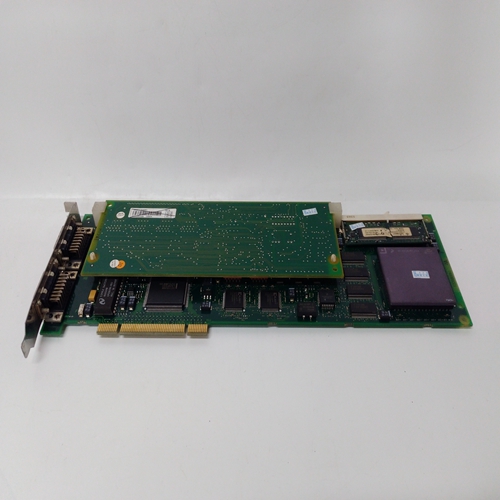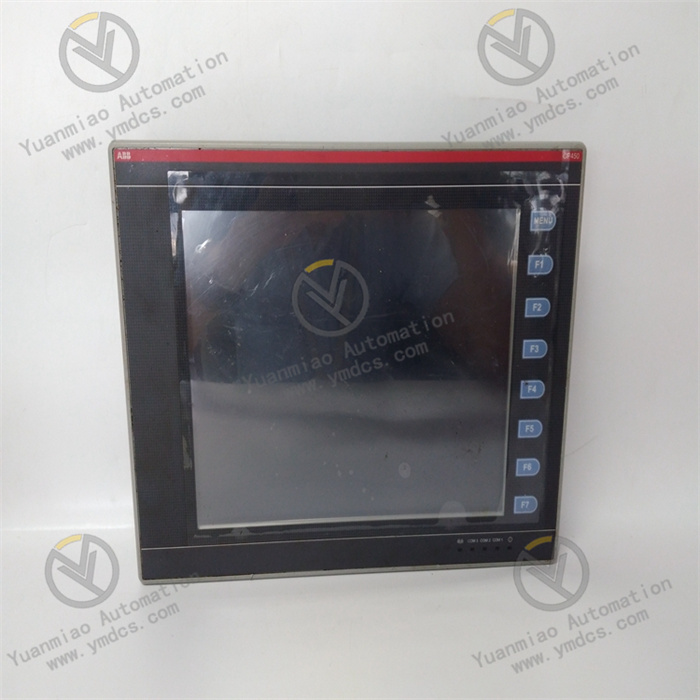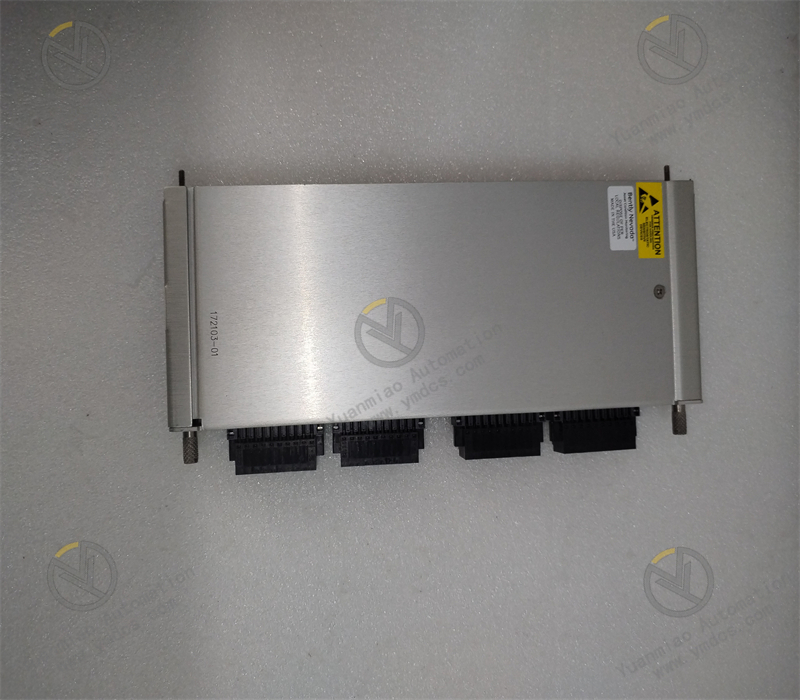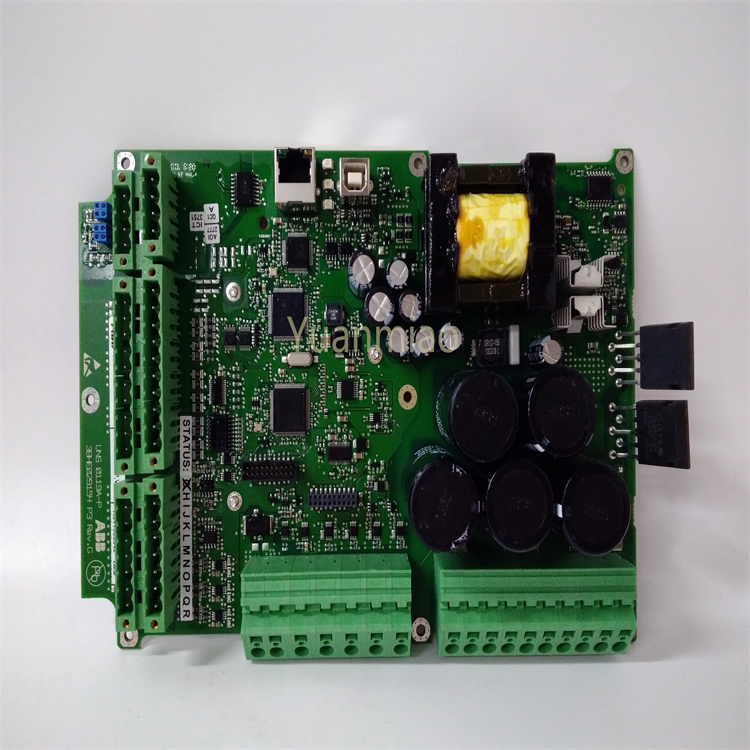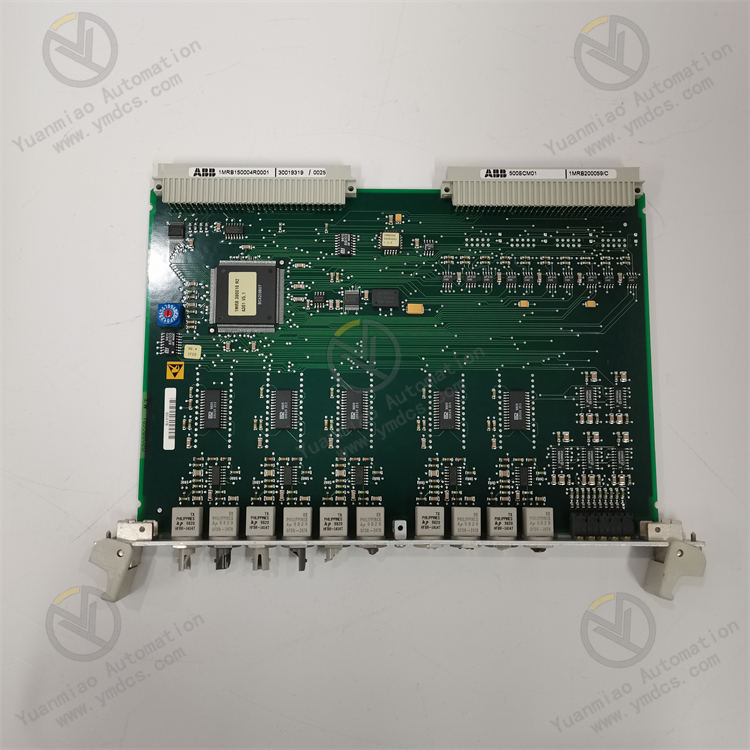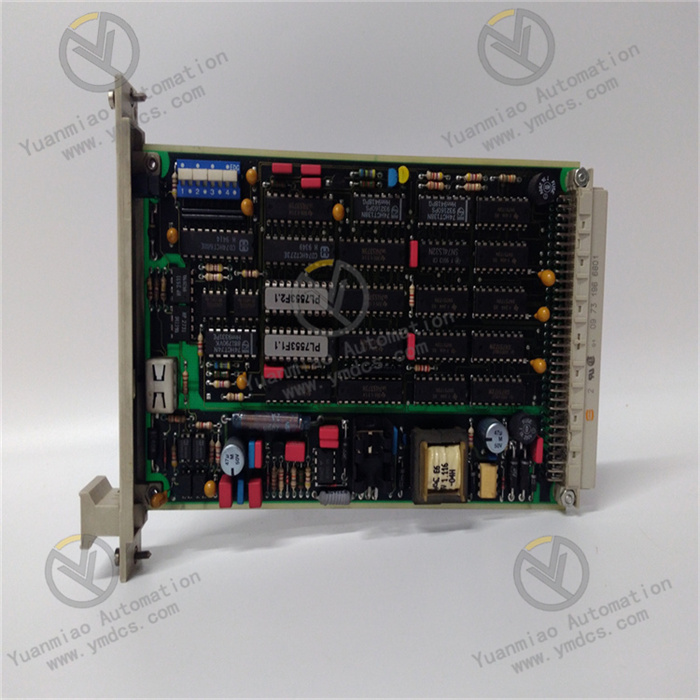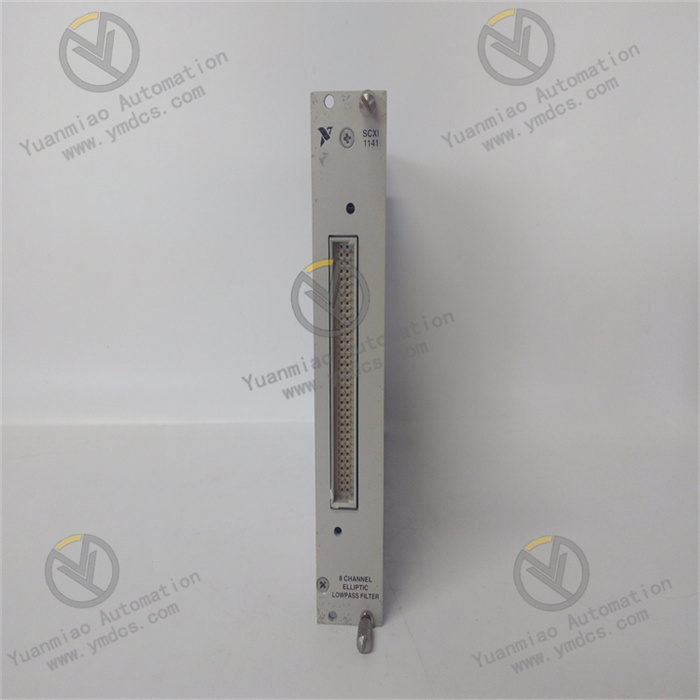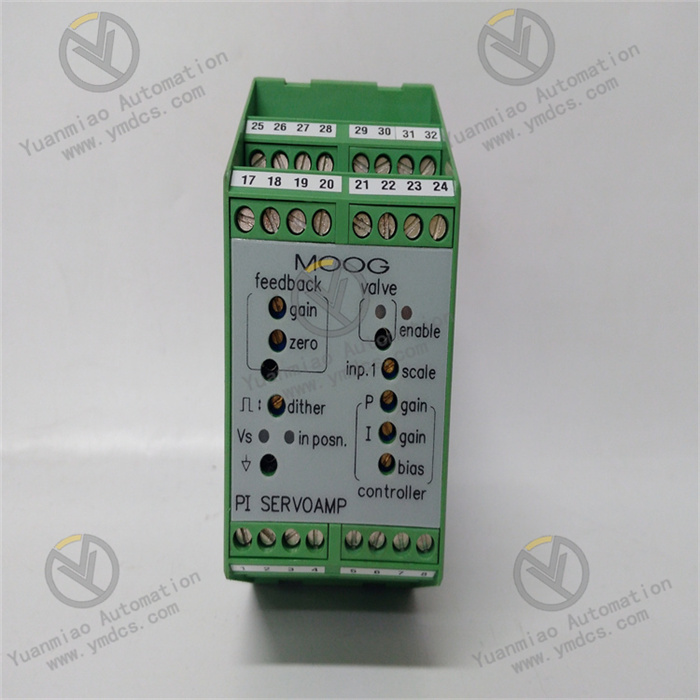Description
ABB PM590-ETH 1SAP150000R0271
Overview
The ABB PM590-ETH 1SAP150000R0271 is a high-performance industrial control module developed by ABB, specialized in complex automation and drive systems. As a key component of ABB's advanced control product series, this module integrates robust hardware architecture and cutting-edge control algorithms, serving as a critical interface for system communication, motor control, and functional coordination in industrial applications such as power generation, manufacturing, and process control.
Technical Parameters
1. Power Specifications
- Input Voltage: 24V DC (±10% tolerance)
- Power Consumption: ≤20W
- Voltage Protection: Transient overvoltage suppression (TVS diodes)
2. Communication Parameters
- Ethernet Interfaces: 2 × 10/100/1000 Mbps (RJ45, support for Modbus TCP/IP, Profinet, EtherNet/IP, etc.)
- Serial Ports: 2 × RS485/RS232 (Modbus RTU, ASCII)
- Wireless Option: Optional WiFi/4G module (802.11ac, LTE Cat 4)
3. Processing Capability
- CPU: 64-bit ARM Cortex-A55, 2.0GHz
- Memory: 1GB RAM / 8GB Flash
- Data Processing Rate: Up to 2000 I/O operations per second
4. Environmental Specifications
- Operating Temperature: -40°C to +70°C
- Storage Temperature: -55°C to +85°C
- Humidity: 5%-95% (non-condensing)
- Protection Level: IP20
- Dimensions: 150mm × 120mm × 60mm
- Weight: Approximately 0.8kg
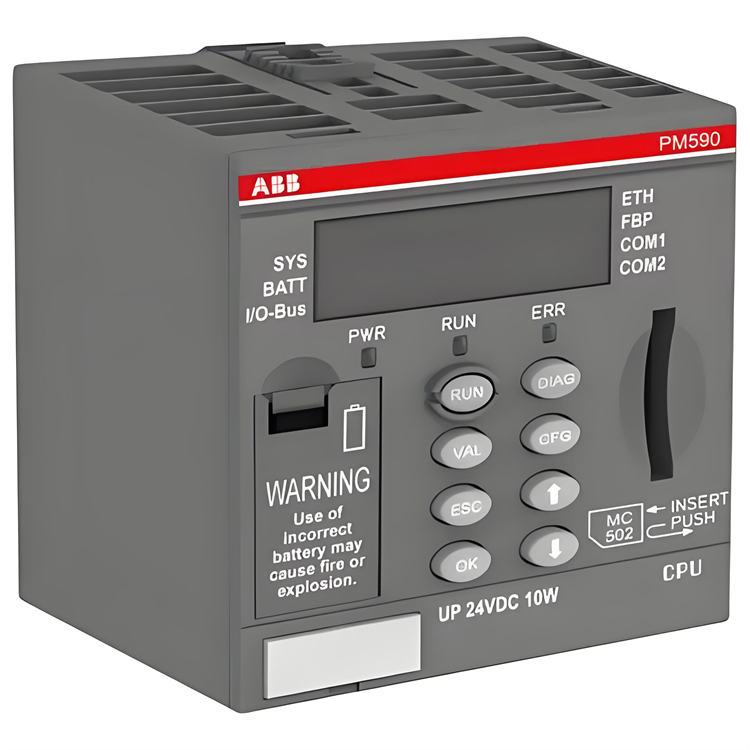
Functional Features
1. High-Speed Multi-Protocol Communication
Dual Gigabit Ethernet ports enable real-time data exchange with PLCs, SCADA systems, and HMIs, supporting multiple industrial protocols (Modbus, Profinet, EtherNet/IP) for seamless integration into complex automation networks.
2. Advanced Motor Control Capability
Supports vector control, direct torque control (DTC), and V/F control modes for various motor types (AC induction, permanent magnet servo, DC), enabling precise regulation of speed, torque, and position under variable loads.
3. Robust Industrial-Grade Design
Built-in overvoltage, overcurrent, short-circuit, and overheat protection mechanisms safeguard against transient faults. The module withstands harsh environments with high electromagnetic interference, vibration, and temperature fluctuations.
4. Flexible Expansion & Programming
Standardized architecture allows easy integration with I/O extension modules, communication interfaces, and functional blocks. Supports programming via ABB's Control Builder M (based on IEC 61131-3) for custom automation logic development.
Operation Guide
1. Installation
- Mount the module on a DIN rail or control panel with power off.
- Connect 24V DC power supply to the designated terminals, ensuring correct polarity.
- Wire Ethernet/serial cables using shielded connectors to minimize interference; secure cables with strain relief.
2. Configuration
- Use ABB's Control Builder M software to set parameters via Ethernet:
- Configure IP addresses, subnet masks, and gateway for network connectivity.
- Define motor control modes, communication protocols, and I/O mapping based on application requirements.
- Upload custom control programs (if needed) using IEC 61131-3 languages (Ladder Logic, Structured Text, etc.).
3. Commissioning
- Power on the system and check status LEDs:
- Green LED: Normal operation.
- Red LED: Fault (refer to the manual for error codes).
- Perform motor jog testing at low speed to verify speed/torque response and encoder feedback accuracy.
- Test network connectivity by pinging from a host device and monitoring data transmission latency.
4. Routine Maintenance
- Regularly clean the module's heat sink and ventilation slots to prevent dust accumulation.
- Monitor input voltage stability using a multimeter; replace faulty power supplies promptly.
- Review event logs for recurring faults and update firmware via ABB's official platform to ensure optimal performance.
5. Fault Handling
- Refer to the front-panel LED fault codes (e.g., E035 for overcurrent) and follow troubleshooting steps in the manual:
- Inspect motor windings and power cables for short circuits.
- Verify encoder wiring and reset control parameters to default values if necessary.
- For persistent issues, contact ABB technical support and provide the fault log (accessible via the module's web interface or configuration software).


